Would you prefer a bagged, blown and hard-tuned HSV Clubsport or mild GTS? Tekno Performance’s Jono Webb built both
This article on the Tekno Performance HSV GTS and R8 was originally published in the 2014 issue of Street Machine’s LSX Tuner magazine
JONO Webb has had some wicked toys over the years, but the launch of the F-Gen HSV range had him wondering: Would the top-dog 430kW GTS really offer $20,000 more in the fast department than a modified Clubsport?
He answered this in the best way possible – by taking one of each, straight off the showroom floor, and throwing all the good gear in the Tekno Performance workshop at them. The Clubsport was built first, packing a Harrop HTV2300-blown LS3 making 489kW at the treads, AirRex air suspension and Forge 20-inch wheels, while the GTS replaced it and trod a milder path, though it still wallops out 473 rear-wheel kilowatts.
Tekno have a long-standing relationship with the Motorama Springwood Holden and HSV dealership, so that’s where Jono and his 2IC at Tekno, Greg Markham, sourced their shop cars.
“Originally we ordered an R8 before HSV could even tell us what the finalised specs were between the models,” says Greg. “We wanted the first supercharged Gen-F in Australia, which we achieved, but a customer walked in and said he had to own it.
“We then purchased the red Clubsport and we got a bit carried away. We had to push the engine with CNC-ported heads and a 239/243 114 LSA camshaft with 0.624in lift.”
A Harrop HTV2300 blower was fitted to Tekno’s Clubsport, as well as CNC-ported heads and high-flow DeatschWerks fuel injectors
While the LS3 comes fitted with high-flowing rectangular-port heads, they couldn’t pump enough air for Jono, so the CNC-ported units were fitted with Ferrea stainless valves, dual Lunati springs and moly pushrods. DeatschWerks high-flow fuel injectors match the increased lung capacity of the 6.2-litre LS3, along with 17/8-inch four-into-one ceramic-coated extractors and a twin three-inch exhaust system that retains the factory bi-modal mufflers.
The computer was flash-tuned by Tekno to suit the mods, but only after the 2.3-litre supercharger was added between the cylinder heads. As Queensland’s biggest Harrop dealer, Tekno naturally went for the Aussie-made HTV2300 blower and FDFI2300 water-to-air intercooler set-up, though the changeover from VE to VF platforms caused a few issues.
“Being the first to do modifications always proves to be a challenge,” Greg explains. “The supercharger install wasn’t as smooth as first thought due to the differences between VE and VF; LS3 engine management software is different to the VE. So various problems were encountered but all were surpassed.”
With 580hp out of the box, the F-Gen GTS already packs enough horsepower to keep most people entertained. But if your work car is a 300km/h 650hp V8 Supercar like Jono’s, then you need something a little wilder. The decision was made to keep to simpler power-adder mods on the GTS compared to the Clubsport, however, in order to gauge the tuning potential of the standard LSA long motor.
Greg, Jono and the Tekno crew fitted the same DeatschWerks injectors, twin three-inch exhaust and 17/8-inch headers, Lunati dual-valve springs and Trend Moly pushrods, but the valves and ports were left alone. The cam is a smaller 233/238 114 grind, but the GTS’s standard Eaton TVS 1900 blower has been kitted out with a Lingenfelter Stage 2 530kW kit.
This includes a new 11 per cent-overdriven pulley, coupler, hub and crank wheels, cold-air intake and water-to-air intercooler – all part of the kit from Harrop. Even with the smaller 1.9L supercharger (as opposed to the 2.3L unit fitted to the Clubsport), cam and stock-port LSA cylinder heads, the Tekno GTS still made 473kW at the rear wheels after being flash-tuned.
“Being the first GTS delivered in Queensland, we drove straight from the dealership and put it on the dyno to see 324kW at the wheels,” Greg says. “A quick fuel remap saw a 24kW gain, but then we were limited with other adjustments until the software was updated to suit the LSA engine.”
Tekno also spent bulk time developing adjustable suspension options for F-Gen HSVs, with the Clubsport riding on AirRex air-assisted struts and the GTS on coil-overs. “Getting the airbag size and strut mounts right took some R&D, along with hours of liaising with HSV, as the F-Gen has different hubs to the E Series,” Greg says.
The GTS presented a different challenge, as the Gen-F comes standard with the awesome, high-tech four-stage Magnetic Ride Control (MRC) adjustable struts. While Tekno strived to make use of HSV’s hard work, these were replaced on this demo car.
”We also developed two different height springs to suit the factory MRC suspension, but it still wasn’t low enough for our cars, so we disabled the MRC and installed our coil-overs,” says Greg.
Both cars rock Tekno Forge wheels, with the Clubsport wearing 20×8.5-inch and 20×10-inch hoops and the GTS 21×8.5-inch and 21×10.5-inch wheels in purple.
“We were able to get a 10.5-wide rim under the rear of the GTS thanks to precise measuring of the offset. We then had our wheels manufactured in the US to suit,” Greg explains.
Rather than go wild with bodykits or custom paint, the Tekno F-Gens feature subtle styling touches. Both cars sport 3M carbonfibre-look exterior vinyl wrap, with the GTS’s roof panel being covered to contrast with the stark Heron White factory duco. The Clubsport’s roof was similarly wrapped, along with the side vents, mirrors, sections of the front bar, wing and exhaust aperture.
While the Tekno boys kept the GTS’s standard Eaton TVS 1900 supercharger, it was fitted with a Harrop/Lingenfelter Stage 2 pulley, coupler, hub and crank balancer upgrade
While the general specs between the two Tekno F-Gen HSVs look quite similar, the GTS still has a lot more headroom before the boys tap out the standard LSA engine.
Just how much grunt can Jono and Greg make with a bigger blower, head work and wilder camshaft? Keep an eye on the boys from Stapylton!
BLOWN AWAY
Harrop’s HTV2300 supercharger is closely related to the Eaton TVS unit found on two of General Motors’ factory high-performance Gen IV 6.2-litre engines: the 430kW LSA and 476kW LS9.
HSV’s GTS, Chevy’s Camaro ZL1 and Cadillac’s CTS-V all use the LSA engine, which is fitted with a 1.9-litre four-lobe Eaton supercharger, while the Corvette ZR1 features a 2.3-litre unit (the same size as the Harrop HTV2300) on its LS9.
However, there are several key differences between the Eaton and Harrop units – lobe and port design being two. These differences can have a significant effect on parasitic drag, intake temperatures and boost response, which all affects the power output and driving experience.
Will we see GTS owners racing out to upgrade their LSA with LS9 gear? Probably not; Tekno has proven here that the aftermarket can supply plenty of horsepower for relatively small outlay.
Instead, when punters get around to hard-tuning F-Gen GTS HSVs, we’re far more likely to see them go hard. Typical LS modifications (fitting a more aggressive camshaft, porting the cylinder heads, adding static compression and boost, flash-tuning the ECU, improving the exhaust, etc) have seen LS9 outputs soar towards 1000hp (745kW) with the 2.3-litre supercharger still in place.
Who will have the first 1000hp F-Gen GTS? You can bet the Tekno boys are itching to grab that record!
TEKNOPHILE
V8 Supercar driver and team owner, builder of high-performance street cars and all-round good guy: Jono Webb leads a life many of us would love. The Gold Coast-based Webb was born in Castle Hill, Sydney, to former racer Steve Webb.
After bagging a BMX bike racing title, Jono rose to prominence in the family’s Tekno Autosports team, racing Porsches in the Australian Carrera Cup.
He drove fulltime in the Fujitsu V8 feeder series in 2007, piloting a Falcon for the Stone Brothers to finish fourth in his first V8 championship. He went one better in 2008 and took out the championship in 2009.
The following year Jono moved into the big league, driving a DJR-prepared Falcon for the year and taking his first race win on the streets of Sydney. In 2011 Jono shifted Tekno Autosports away from its DJR and Ford alliance to become a fully independent team, running Triple Eight-sourced Holdens.
Kiwi hot-shoe Shane Van Gisbergen has taken over driving duties for 2014, as Tekno went back to a single-car team while Jono juggles fatherhood and running the Tekno empire.
Tekno Performance
2013 HSV Clubsport R8 SV
ENGINE
Engine: 6.2-litre LS3
Heads: LSA rectangular-port, Tekno CNC-ported
Intake valves: Ferrea 1.97in stainless
Exhaust valves: Ferrea 1.60in stainless
Valve springs: Lunati dual springs
Pushrods: Trend Moly 7.350in
Cam: 239/243 114 LSA, 0.624in lift
Blower: Harrop HTV2300
Intercooler: Harrop FDFI2300 water-to-air
Injectors: DeatschWerks 78lb/hr top-fed
Exhaust: 17/8in four-into-one ceramic-coated extractors, Euro III catalytic convertors, twin three-inch system with bi-modal mufflers
Power: 489rwkW
BENEATH
Gearbox: HSV Tremec 6060 six-speed manual
Clutch: Stock HSV
Struts: AirRex adjustable air-assisted coil-overs
Brakes: AP four-piston calipers, 367mm discs
ROLL
Rims: Tekno Forge; 20×8.5 (f), 20×10 (r)
Rubber: Continental ContiSport Contact; 255/35 (f), 275/35 (r)
Tekno Performance
2013 HSV GTS
ENGINE
Engine: 6.2-litre LS3
Heads: LSA rectangular-port, Tekno CNC-ported
Intake valves: Ferrea 1.97in stainless
Exhaust valves: Ferrea 1.60in stainless
Valve springs: Lunati dual springs
Pushrods: Trend Moly 7.350in
Cam: 239/243 114 LSA, 0.624in lift
Blower: Harrop HTV2300
Intercooler: Harrop FDFI2300 water-to-air
Injectors: DeatschWerks 78lb/hr top-fed
Exhaust: 17/8in four-into-one ceramic-coated extractors, Euro III catalytic convertors, twin three-inch system with bi-modal mufflers
Power: 489rwkW
BENEATH
Gearbox: HSV Tremec 6060 six-speed manual
Clutch: Stock HSV
Struts: AirRex adjustable air-assisted coil-overs
Brakes: AP four-piston calipers, 367mm discs
ROLL
Rims: Tekno Forge; 20×8.5 (f), 20×10 (r)
Rubber: Continental ContiSport Contact; 255/35 (f), 275/35 (r)
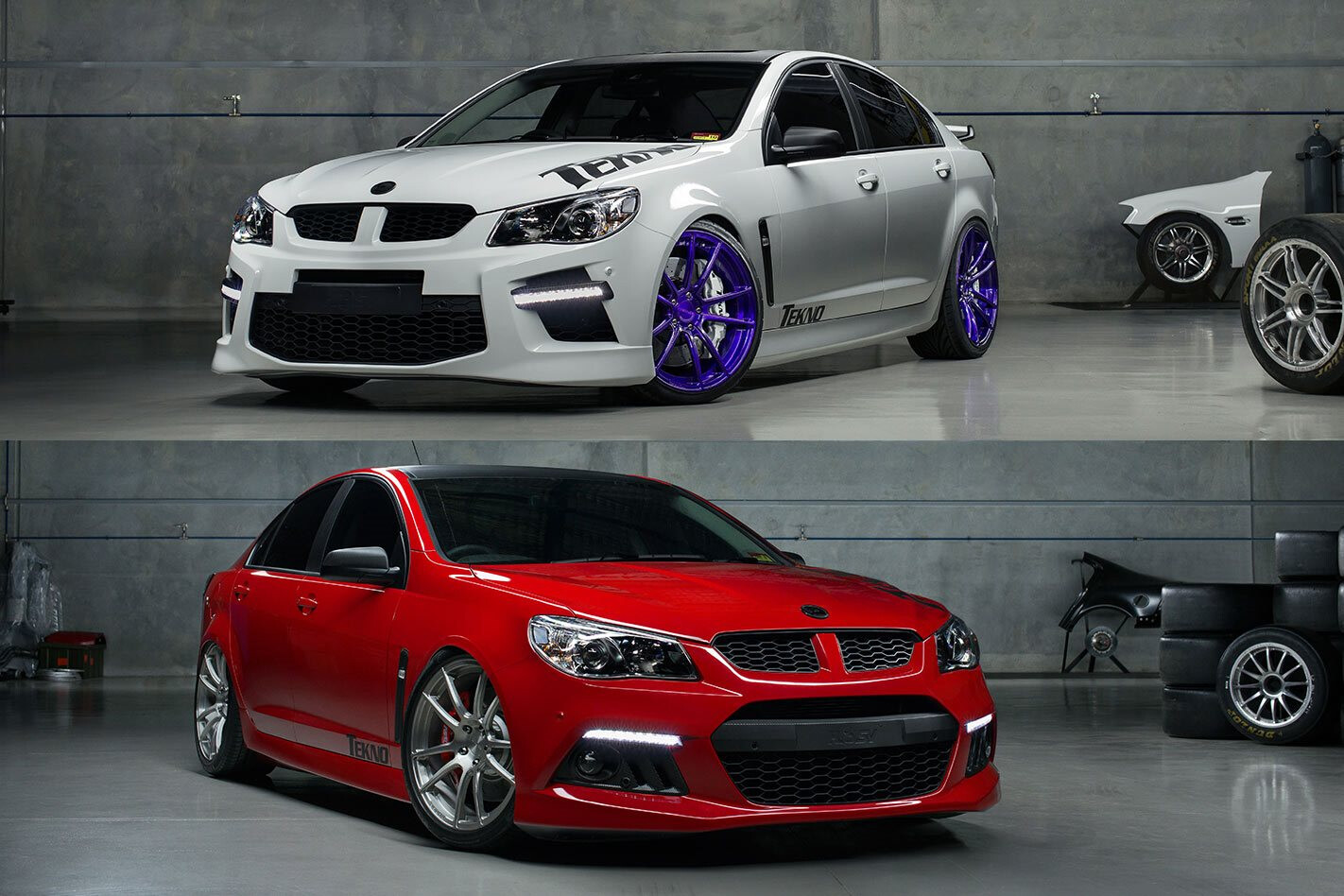
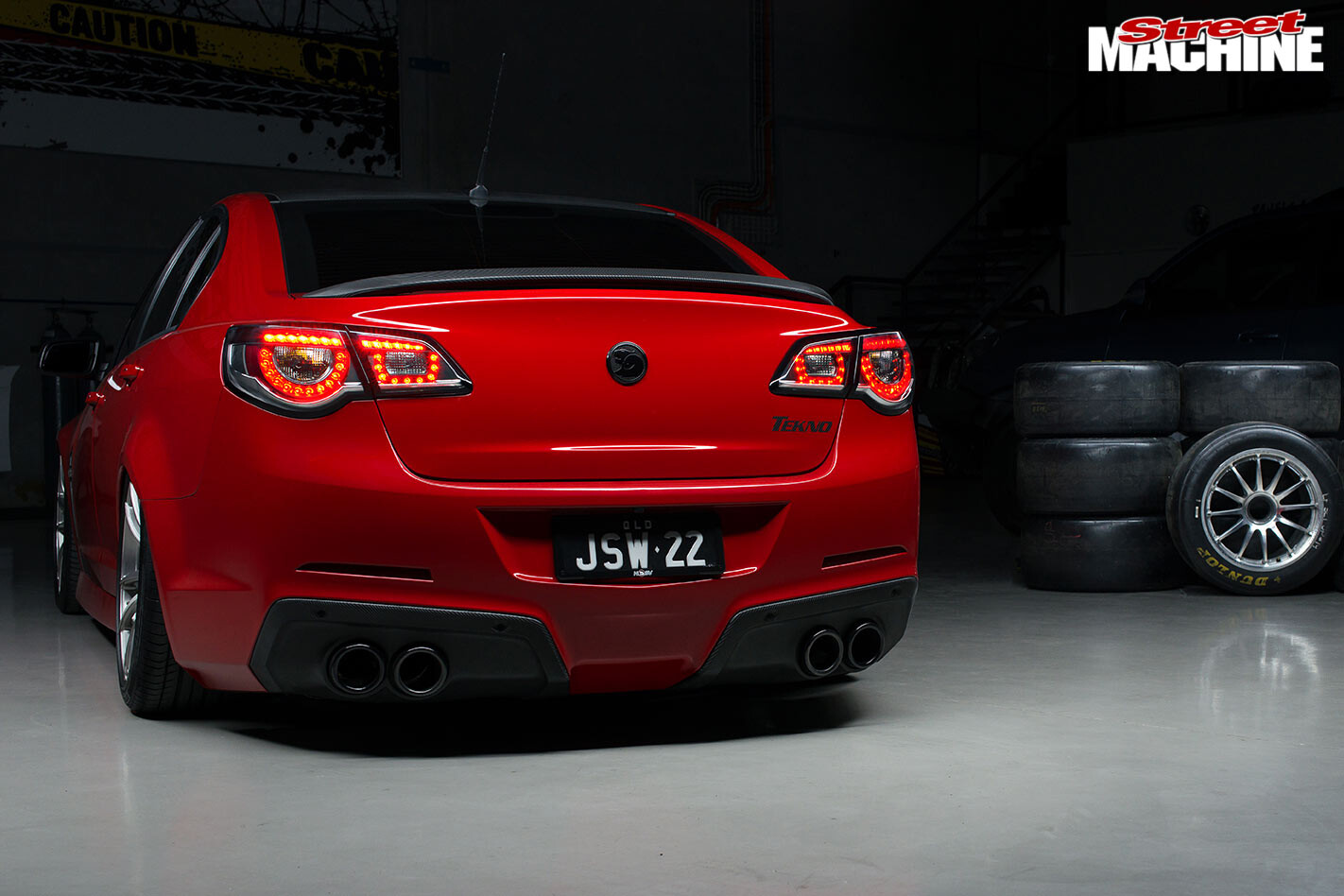
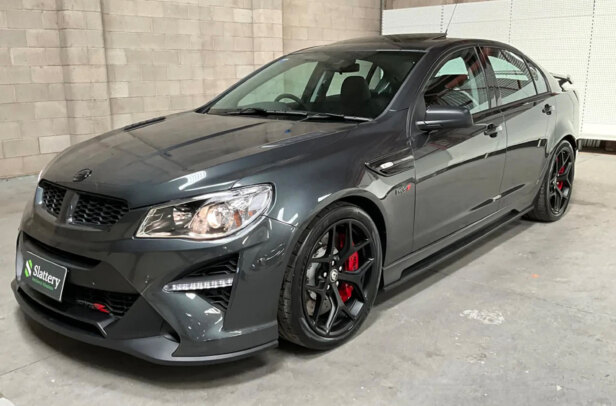
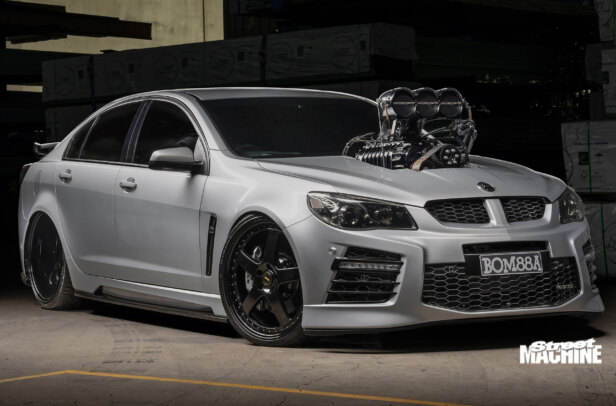
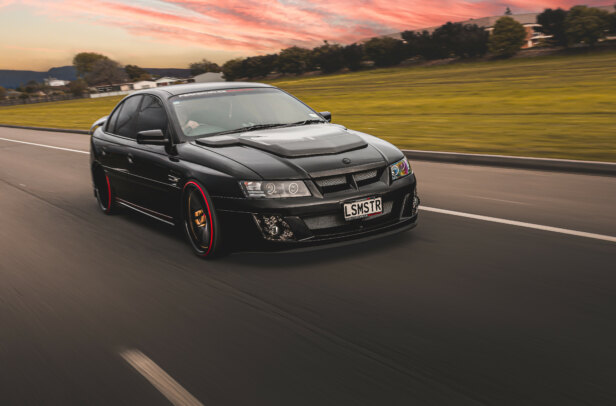
Comments